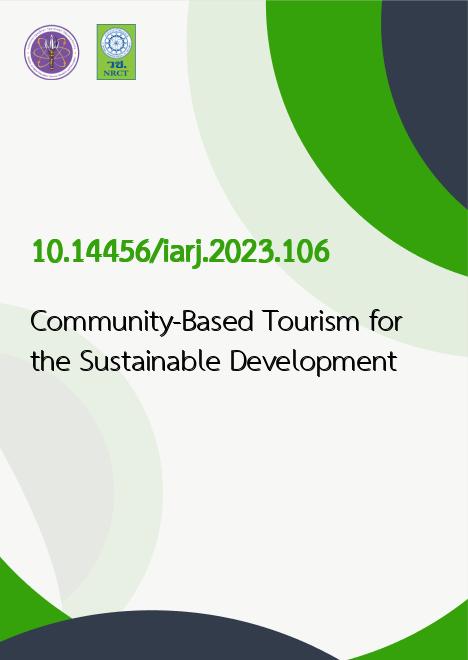
|
Community-Based Tourism for the Sustainable Development |
|---|---|
| รหัสดีโอไอ | |
| Creator | Vasuthida Poonklat |
| Title | Community-Based Tourism for the Sustainable Development |
| Contributor | Boonsan Tharathuek, Supalak Wongpaisanlux |
| Publisher | DR.KEN Institute of Academic Development and Promotion. |
| Publication Year | 2566 |
| Journal Title | Interdisciplinary Academic and Research Journal |
| Journal Vol. | 3 |
| Journal No. | 2 |
| Page no. | 793-812 |
| Keyword | Tourism Management, Sustainable Development |
| URL Website | https://so03.tci-thaijo.org/index.php/IARJ/about |
| Website title | https://so03.tci-thaijo.org/index.php/IARJ/article/view/267016 |
| ISSN | 2774-0374 |
| Abstract | Community-based tourism is an alternative type of tourism and is one of the trends in local tourism that is gaining popularity among tourists who prefer a new lifestyle. As it is a matter of contact between visitors and homeowners, especially in rural areas. Tourists get to travel in the area and learn about the lifestyle and culture of the local people, allowing them to see our local character. Thus, If there is more tourism like this, it will open up an opportunity for creative changes in the locality. This article presents the concept of community-based tourism management toward sustainable development. This is tourism that encourages people in the community to participate in planning. Make decisions and develop your community. To increase the well-being of people in the community both economically. society and environment The guidelines for managing community-based tourism for sustainable development are (1) the community must manage tourism to meet the standards of world sustainable tourism. Including creating a distinctive community identity and maintaining the local community. (2) The community must organize a variety of tourism programs. and public relations for community tourism linking with nearby tourist attractions (3) community leaders and committees must encourage people to participate in public activities of the community and (4) community leaders or tourism management committees should create n |